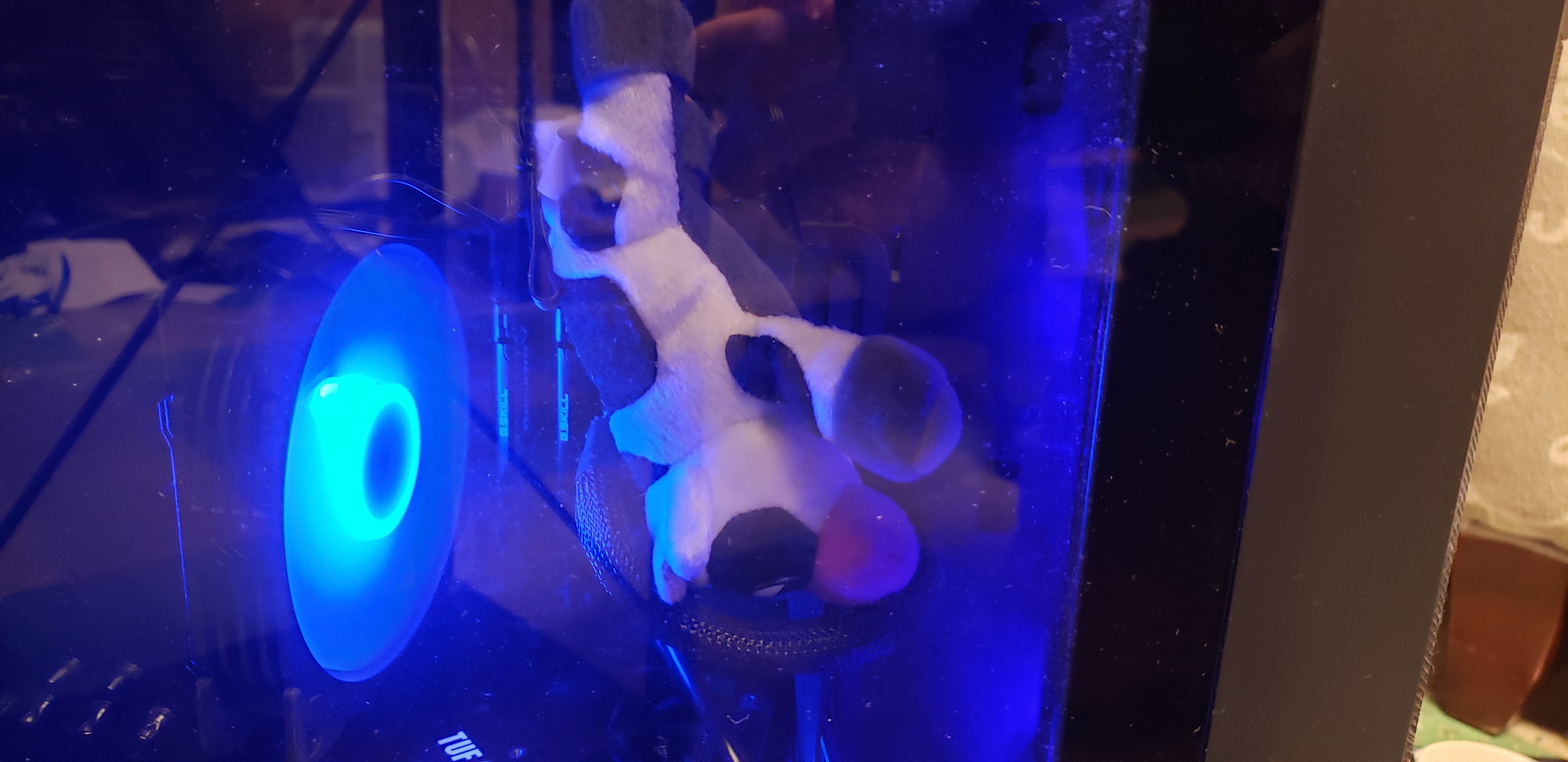I have tried Linux as a DD on and off for years but about a year ago I decided to commit to it no matter the cost. First with Mint, then Ubuntu and a few others sprinkled in briefly. Both are “mainstream” “beginner friendly” distros, right? I don’t want anything too advanced, right?
Well, ubuntu recently updated and it broke my second monitor (Ubuntu detected it but the monitor had “no signal”). After trying to fix it for a week, I decided to wipe it and reinstall. No luck. I tried a few other distros that had the same issue and I started to wonder if it was a hardware issue but I tried a Windows PC and the monitor worked no problem.
Finally, just to see what would happen I tried a distro very very different than what I’m used to: Fedora (Kinode). And not only did everything “just work” flawlessly, but it’s so much faster and more polished than I ever knew Linux to be!
Credit where it’s due, a lot of the polish is due to KDE plasma. I’d never strayed from Gnome because I’m not an expert and people recommend GNOME to Linux newbies because it’s “simple” and “customizable” but WOW is KDE SO MUCH SIMPLER AND STILL CUSTOMIZEABLE. Gnome is only “simple” in that it doesn’t allow you to do much via the GUI. With Fedora Kinode I think I needed to use the terminal maybe once during setup? With other distros I was constantly needed to use the terminal (yes its helped me learn Linux but that curve is STEEP).
The atomic updates are fantastic too. I have not crashed once in the two weeks of setup whereas before I would have a crash maybe 1-2 times per week.
I am FULLY prepared for the responses demanding to know what I did to make it crash and telling me how I was using it wrong blah blah blah but let me tell you, if you are experienced with Windows but want to learn Linux and getting frustrated by all the “beginner” distros that get recommended, do yourself a favor and try Fedora Kinode!
When I started learning Linux years ago when I studied IT I was actually taught UNIX but the first Linux distro I was exposed to was Red Hat back in school around 2000. Fedora was derived from that and for a while I was more familiar with that. However with the popularity of Debian and Ubuntu, it seems most of the instructions out there are geared around that so I’m now pretty much just sticking with Debian.
Here’s the deal, most people from yesterdays started on Ubuntu or something similar. So, they suggest what worked for them. I just moved my wife away from Windows and straight into Fedora, I haven’t had to help her on anything other than once she could not find the printer (it’s on another VLAN and she was not connected to it 🙄). She is loving it and just last night told me, and I quote, “I should have changed sooner”.
Fedora just works, but another factor may be that Debian and Ubuntu based distros are LTS what le Fedora is more semi-rolling, this helps with stability, thus it makes sense to suggest something with less probability of breaking suddenly than something they may need to roll back.
As for atomic distros, YMMV. I find them sluggish during install, boot and when starting an app for the first time, and in my case, broken after a few updates (would not work on Wayland forcing me to log in over X11).
Curious how your atomic distro broke, since you can
rollbackandrebasepretty easily after a problematic update. I’m running Bazzite on a 10yo laptop, and it’s been great; I even rebased to a completely different DE, then did a rollback when I decided it didn’t work for me.Yeah, I’ve no idea what happened either, as I’m not that smart, lol. I just tend to move away from stuff that breaks easily. I searched a bit around to see if I found anyone else with this issue, but found nothing even remotely similar.
Could be that my hardware is the issue? I was running it on a Gazelle 16 (System76) with an RTX3050Ti. But Fedora Workstation has always worked flawlessly on it.
Weird. I would be interested to know what actually happened, but I am not smart enough to troubleshoot hardware to that degree! At least you found something that works.
The atomic updates are fantastic too. I have not crashed once in the two weeks of setup whereas before I would have a crash maybe 1-2 times per week.
I think I crashed it less than 10 times in 2 years of usage.
Is it because Fedora is usually considered bleeding edge?
Yeah, it might be easy to install but you are also a beta tester of things that will be in more stable distros two years from now.
But with that said, I love Fedora, but with Gnome. I use Nobara for the gaming simplicity but with the vanilla Gnome spin. I’d recommend it to anyone, most Linux distros these days are pretty user friendly once installed.
you are also a beta tester of things
Huh? Fedora Workstation is built on stable releases, made by people who actually do QA.
Beta is the wrong word, but there is quite a difference in stability between Fedora and Debian.
there is quite a difference in stability between Fedora and Debian.
Sure but Debian really, REALLY is not a newbie distribution.
Is it because Fedora is usually considered bleeding edge?
That was literally more than 10 years ago.
I mean, Ok
Yes, that article is wrong
I don’t use Fedora, so I believe you.
Maybe GNOME got more stable… but the non LTS kernels often cause issues, and KDE is currently unstable again (while it worked perfectly on Plasma 6.0)
the non LTS kernels often cause issues
In 10 years of using Fedora (granted: my current main Linux system is SteamOS but I do have hardware running Fedora as well but with Gnome as desktop in that case) I once had a kernel-related bug, IIRC involving some fairly new AMD hardware.
KDE is currently unstable again (while it worked perfectly on Plasma 6.0)
Unless you’d be so kind to point me to a direction that showed that your instability is because of Fedora and not some bug that suck into Plasma 6.1, you’d have the same bug under any other distribution with Plasma 6.1.
Fedora simply takes what KDE offers, and the whole VRR etc. additions seem to cause tons of bugs.
Already reported, not sure how helpful.
But being the first to implement KDE releases… is problematic.
Fedora simply takes what KDE offers, and the whole VRR etc. additions seem to cause tons of bugs.
Like any other distribution with KDE software.
But being the first to implement KDE releases… is problematic.
That comment makes little sense. Someone has to be the first. It’s impossible for everyone to wait. Also waiting forever means that existing users are stuck with old bugs because the update is not coming out. The first Plasma 6.1 update has been released yesterday. Don’t think Fedora users will have to wait forever for this.
Btw, Plasma is not the default desktop of Fedora. OP mentioned it but OP also talks about noobs who should stick to defaults anyway and also not make experiments with Atomic editions either.
I recommend slackware exclusively. Sometimes times it feels like I’m pissing into the wind.
Nice to hear that recommended! Slackware was the first distro I installed at home, thanks to it being included on a special cover CD from one of the magazines some time in the late 90s? Not touched it for about 20 years but glad to hear it’s still going.
i discovered it around the same time, but i forget how. It’s been my only daily driver since then. I can fumble my way through a .deb distro if I have to, but slackware is my comfort zone.
You should throw -current up on a distrohop partition and re-live your youth.
Coincidentally, that’s what using it is like, too. :)
I’d be offended if I weren’t so busy managing my own dependencies.
There are couple of concerns and how Fedora Workstation is designed for… well, development workstation. There is SELinux, that sometimes gets in a way, now they ditched codecs with loyalties by default, some default configs are a bit controversial and maybe not perfectly suited for home computer and non-tech savvy users, 3rd party packages are sometimes lacking and when you want to go beyond what’s in stock repo and rpmfusion, you can even break the system by installing random COPR packages (I mean AUR is not a whole lot better, but is more complete and less needed given how much there is to stock repos, PPAs are just as bad) or end up compiling stuff manually. But I still think that Fedora can be pretty nice for many people out of the box.
Unfortunately boring distributions don’t get recommended because users of boring distributions don’t bother commenting on distribution discussions.
And it’s really unfortunate that obscure distributions have more vocal fans, because boring distributions are much better for beginners.
Ironically this is how I feel about Arch, for me it’s worked flawlessly for years.
I don’t bother getting in ‘discussions’ about using it, because if other people have problems I’m not going to convince them that I don’t.
It’s mostly the installation and initial setup that’s a pain on arch, so definitely not a beginner distro, but very good nonetheless
I’m salty on Red Hat and won’t touch anything near it.
I recommend Zorin because it’s Debian based and I’ve been running Debian Stable for over 20 years. If there’s an issue I can probably help.
I’ve actually tried Zorin and was really impressed! My favorite use of GNOME I’ve seen for sure. Though it’s technically Ubuntu based (which is Debian based).
Good point! I forgot Zorin is actually based on Ubuntu. Thanks for the reminder.
I’m switching to COSMIC on Debian Stable when that becomes an option. Until then, It’s Fedora with Qtile Wayland (and Hyprland as backup).
Edit: though I have a Debian VM where I’ll try to get Qtile Wayland set up via pipx and document the process so might go to Debian before then.
That’s funny, you’re the second person today to mention Cosmic to me. I hadn’t seen it yet – now I’m interested as well.
deleted by creator
I put my tech illiterates on Fedora with GNOME without issue. If you’re the one doing the installation and can install the RPMFusion stuff like drivers and codecs then yeah it’s pretty smooth sailing.
I had a similar experience on my laptop. I tried Ubuntu which broke after trying to throw on Nvidia drivers (using the official docs). I tried Mint and Debian, both of which couldn’t detect my laptop’s wifi card (after hours of trying to fix - apparently a common issue but the fixes did not work for me!). I landed on Fedora, worked great. I’m now on EndeavourOS, but Fedora was the stepping stone I needed.
My desktop I built recently is Bazzite, which is Fedora based and I love it.
I have never touched Linux/GNU and I installed Linux after the Microsoft recall and when with standard workstation (GNOME) as a dual boot. After the first two weeks reinstalled fedora over top of windows and haven’t looked back.
That was 2 months ago and and having no issues even gaming on my machine works great.
I love Fedora. But, part of my day job is also managing linux servers. I tend to recommend things that I think are the easiest to get running. Although Fedora is super easy to get running (at least to me), I find the installation process of mint of pop os to be much easier overall. Between those two OSes, I have moved several people from windows to fulltime linux and I’m not entirely sure that the conversion would have been as successful with fedora and without more help from me during the install process.
I was totally on board until centos got screwed over ( and subsequently AM2 )
I’ll be a cold day before I touch any fedora or redhat again or even mention to another person that they should run it.
I’m probably going to get downvoted for this but I’m a Linux noob overall…. Windows has historically been what I’ve used. Or Ubuntu. I did distrohop to antixLinux and other really super small distros, but they didn’t fix my problems and I ended up back on relatively bloaty Ubuntu for further testing and sadly it solved bout a third of my problems (the hardware is ancient enterprise shit with a whopping 4gb ram and 16 usb ports)
I’ve been looking for a Debian based system to replace Ubuntu because I’m a noob and Debian-based is super different from the fedora.
I’m sure fedora is great! Tons of people love it! But for a noob is can be really daunting. Especially when most Linux instructions come in three flavors “Ubuntu/debian” and 2 other things. Who knows which two. You, the advanced Linux user, probably know which two but your noob doesn’t. And doesn’t understand the difference.
I’m not a total noob but I prefer Debian because I know a person who gets Debian and can help me. If I knew a fedora user that was actually willing to help me, I’d use that, but I’ve never met one so I’ll stick with what I know.
What about a lightweight variant like Lubuntu or Xubuntu? 4Gb should be usable for a lot of things.
Surprisingly unhelpful, thanks! :)
That’s why I don’t swap for fedora. That’s the kind of help you tend to get unless you know someone who knows the distro, so I guess thanks for exemplifying :)
I don’t understand. That’s essentially where I learned Fedora from. Where did you learn to use Windows?














